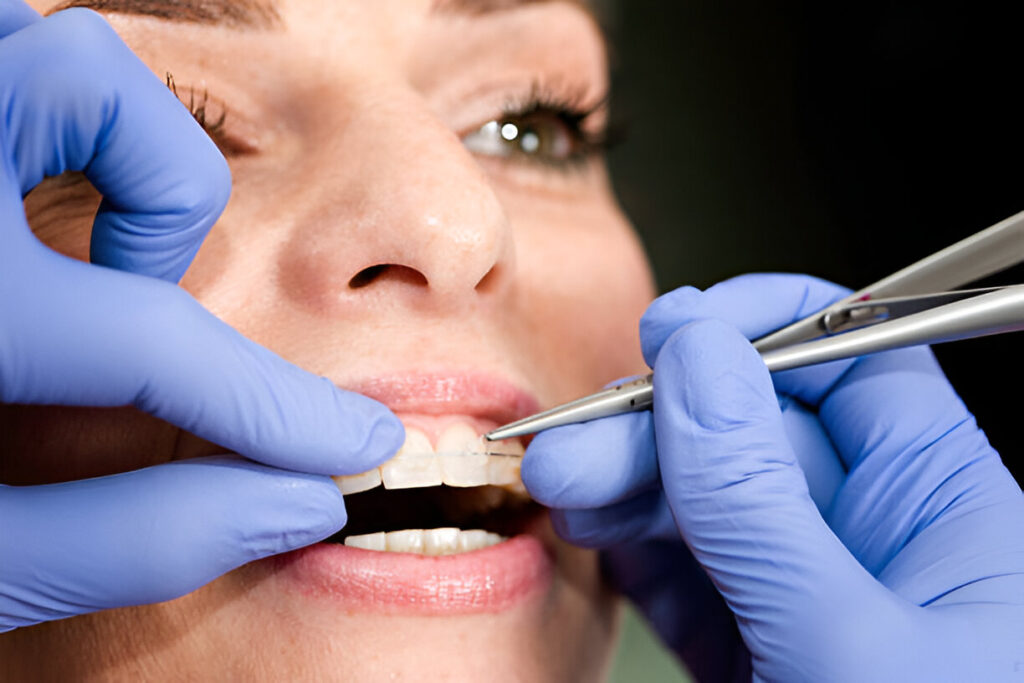People who seek inconspicuous dental correction can choose ceramic braces because they adapt to a tooth color that makes them blend into the teeth. Clear, along with tooth-colored ceramic brackets, provide patients with a discreet treatment option because they match the natural tooth color.
According to Sloss Orthodontics (sc-ortho), many patients in the Centennial area prefer braces Centennial for their more discreet look compared to traditional metal options. The treatment method enables you to receive an attractive smile that produces successful outcomes as well as a beautiful finish.
How Effective are Ceramic Braces?
The treatment capabilities of ceramic braces extend to multiple dental malocclusion needs since the braces efficiently resolve dental bite issues together with crowded teeth disorders and aesthetic tooth alignment irregularities. Severe dental correction requires stronger force than ceramic braces deliver due to their inferior ability compared to traditional metal braces.
You must consult medical professionals at Sloss Orthodontics (sc-ortho), like other orthodontic practices, to understand if ceramic braces suit your needs. Through strategic planning, the orthodontist maximizes the effectiveness of your treatment process.
Advantages of Ceramic Braces
1. Less Visible
The beauty factor of ceramic braces makes them appealing because they blend with tooth color, consequently permitting sufferers to hide their dental appliances better than traditional metal braces. The discrete pleasantness of ceramic braces makes them popular among adults and young adults due to the fact they serve properly for orthodontic sufferers who want to maintain decreased visibility in their dental home equipment.
2. Allergy-Friendly
Orthodontic patients generally tend to enjoy fewer hypersensitive reactions once they choose ceramic braces, especially when you consider that these gadgets do not encompass steel components, which typically cause allergic responses. The risk of nickel allergy decreases when patients choose ceramic braces instead of metal braces because these options use different materials.
3. Effective for Complex Treatments
Ceramic braces combine the treatment flexibility of metal braces and offer the ability to handle complex structural problems, while clear aligners work best for simpler orthodontic adjustments.

Disadvantages of Ceramic Braces
1. Easily Stained
The color-absorbing properties of ceramic braces create challenges during brace-wearing because they stain when people drink coffee and wine and eat berries. The small elastic ties fastening the wires readily absorb staining even though the brackets themselves show minimal susceptibility to discoloration.
2. More Fragile
Ceramic brackets demonstrate reduced durability when compared to metal brackets because they show more tendency to chip or break. Individuals participating in contact sports must exercise greater care since ceramic braces have increased susceptibility to damage.
3. Higher Cost
Patients need to pay more for ceramic braces as well as benefit from their attractive appearance when compared to metal alternatives. Crooked teeth patients generally consider the elevated price to be reasonable since ceramic brackets provide better discretion.
Conclusion
Ceramic braces function as an excellent discreet option for people who want teeth straightening solutions. Among their drawbacks are potential staining and fragility, but they deliver a less noticeable aesthetic than conventional metal braces. Sloss Orthodontics (sc-ortho) will determine if ceramic braces are suitable for you. Then, move forward to get a new confident smile.

